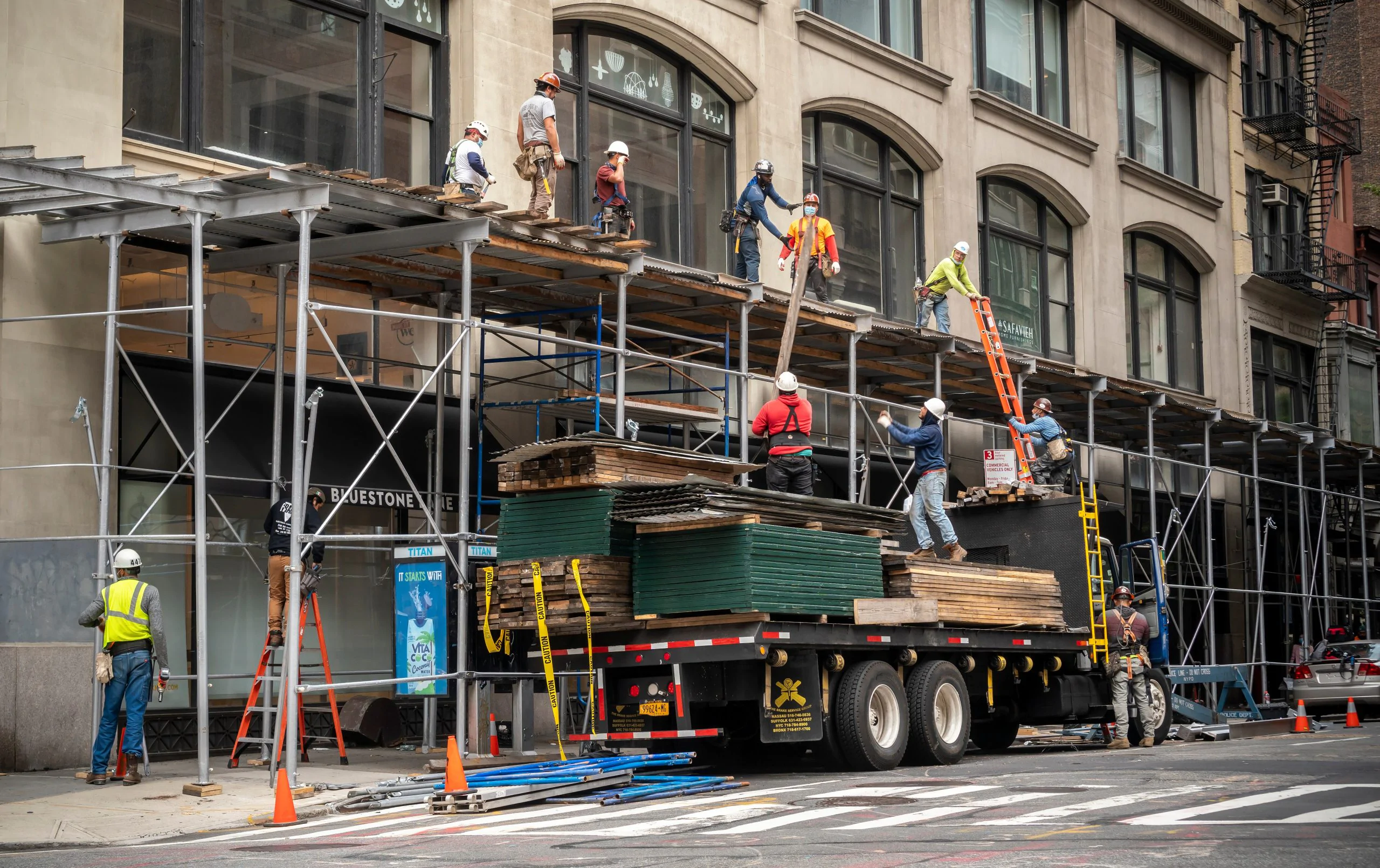New York Legal Services
Comprehensive information on New York State laws and regulations to help you understand your rights and options after an injury or workplace incident.
Auto Accidents in New York
Understanding New York's No-Fault Insurance System and Your Rights After a Vehicle Accident
New York No-Fault Insurance System
New York operates under a "No-Fault" insurance system, which means that regardless of who caused the accident, your own insurance company pays for medical treatment and other out-of-pocket losses up to $50,000. This system was designed to reduce litigation and ensure prompt payment of medical bills and lost wages.
Key Components of NY No-Fault Coverage
Basic Economic Loss Coverage of up to $50,000 per person includes all necessary medical and rehabilitation expenses, lost wages up to $2,000 per month for up to three years, other reasonable expenses up to $25 per day for up to one year, and a death benefit of $2,000 in addition to the basic economic loss coverage.
Serious Injury Threshold
To sue for pain and suffering in New York, you must have sustained a "serious injury" as defined by New York Insurance Law §5102(d), which includes death, dismemberment, significant disfigurement, fracture, loss of a fetus, permanent loss of use of a body organ, member, function, or system, permanent consequential limitation of use of a body organ or member, significant limitation of use of a body function or system, or a medically determined injury that prevents normal activities for at least 90 days in the 180 days following the injury.

Important Deadlines
In New York, the statute of limitations for filing a personal injury lawsuit after an auto accident is generally three years from the date of the accident. However, there are critical deadlines for no-fault benefits:
- No-Fault Application must be filed within 30 days of the accident
- Medical bills must be submitted within 45 days of treatment
- Lost wage claims must be submitted within 90 days
Comparative Negligence
New York follows a "pure comparative negligence" rule, which means that you can recover damages even if you were partially at fault for the accident. However, your recovery will be reduced by your percentage of fault.
Recent Changes to NY Auto Accident Laws
As of 2023, New York has implemented several changes to its auto accident laws, including increased minimum liability insurance requirements and expanded coverage for pedestrians and cyclists. Always consult with an attorney for the most current legal advice.
Workers' Compensation in New York
Understanding Your Rights and Benefits After a Workplace Injury

Eligibility Requirements
Almost all employees in New York State are covered by the Workers' Compensation Law, regardless of how many employees are in the company. Coverage begins from your first day on the job and includes:
- Full-time employees
- Part-time employees
- Temporary workers
- Family members employed by the company
- Volunteers for certain organizations
Exempt Occupations
Some workers are not covered by the standard Workers' Compensation Law but may be covered under separate systems, including federal employees, interstate railroad employees, maritime workers, clergy and members of religious orders, some real estate salespersons, some domestic workers, and true independent contractors (not misclassified employees).
Types of Workers' Compensation Benefits
Medical Benefits
100% coverage for necessary medical care related to your work injury with no time limit or cost limit as long as the care is necessary and related to the work injury.
Temporary Disability Benefits
Cash benefits for lost time from work, calculated at 2/3 of your average weekly wage multiplied by your percentage of disability, up to a maximum weekly amount.
Permanent Disability Benefits
Compensation for permanent impairments, either scheduled loss of use (SLU) for specific body parts or non-scheduled awards for other permanent disabilities.
Death Benefits
Weekly cash benefits for surviving dependents plus funeral expenses.
Filing a Claim
To file a workers' compensation claim in New York, follow these essential steps:
- Seek medical attention immediately and tell the healthcare provider it's a work-related injury
- Notify your employer in writing within 30 days of the accident
- File a C-3 form with the Workers' Compensation Board within two years
- Attend medical examinations as required
- Attend hearings if scheduled by the Board
2023 Updates to Workers' Compensation in NY
Recent changes to New York workers' compensation law include increased maximum weekly benefit rates, expanded coverage for certain occupational diseases, and streamlined claims processing procedures. The maximum weekly benefit rate for 2023 is $1,125.46, which is two-thirds of the New York State average weekly wage.
New York Labor Laws
Understanding Workplace Rights and Protections Under New York State Law
Workplace Safety (Labor Law §240 & §241)
New York's "Scaffold Law" (Labor Law §240) and Labor Law §241 provide special protections for construction workers and others working at heights or with dangerous equipment. These laws impose "absolute liability" on property owners and contractors for gravity-related injuries when proper safety equipment is not provided.
Key Provisions of Labor Law §240 (The Scaffold Law)
- Requires proper scaffolding, hoists, stays, ladders, slings, and other safety devices
- Applies to building construction, demolition, repair, cleaning, and painting
- Holds owners and contractors strictly liable for injuries from inadequate safety equipment
- Does not require the injured worker to prove negligence
- Comparative negligence is not a defense (except in cases of sole proximate cause)
Labor Law §241(6)
This section requires owners and contractors to provide reasonable and adequate protection and safety for workers and to comply with specific safety rules and regulations issued by the Commissioner of Labor. Unlike §240, claims under §241(6) require showing a violation of a specific Industrial Code provision.
Wage and Hour Laws
New York has some of the strongest wage and hour protections in the country. Key provisions include:
- Minimum wage: $15.00/hour in NYC, Long Island, and Westchester; $14.20 in rest of state
- Overtime: 1.5x regular rate for hours worked beyond 40 in a workweek
- Spread of Hours: Extra hour of pay at minimum wage when workday exceeds 10 hours
- Manual workers must be paid weekly; clerical workers at least semi-monthly
- Wage Theft Prevention Act requires detailed pay notices
Employment Discrimination Laws
New York State Human Rights Law (NYSHRL) and New York City Human Rights Law (NYCHRL) provide broader protections than federal law. They prohibit discrimination based on age, race, creed, color, national origin, sexual orientation, gender identity or expression, military status, sex, disability, predisposing genetic characteristics, familial status, marital status, and domestic violence victim status.
Paid Family Leave
New York's Paid Family Leave (PFL) is one of the most comprehensive in the nation:
- Up to 12 weeks of paid time off for family care
- Pays 67% of average weekly wage up to a cap
- Includes job protection and continuation of health insurance
- Available after 26 weeks of employment

Scaffold Law Protection

Wage & Hour Rights

Anti-Discrimination

Family Leave Benefits
Need Specific Legal Guidance?
Our team is here to help you understand how these laws apply to your specific situation. Get personalized guidance from experienced New York legal professionals.
Get Legal Guidance Today